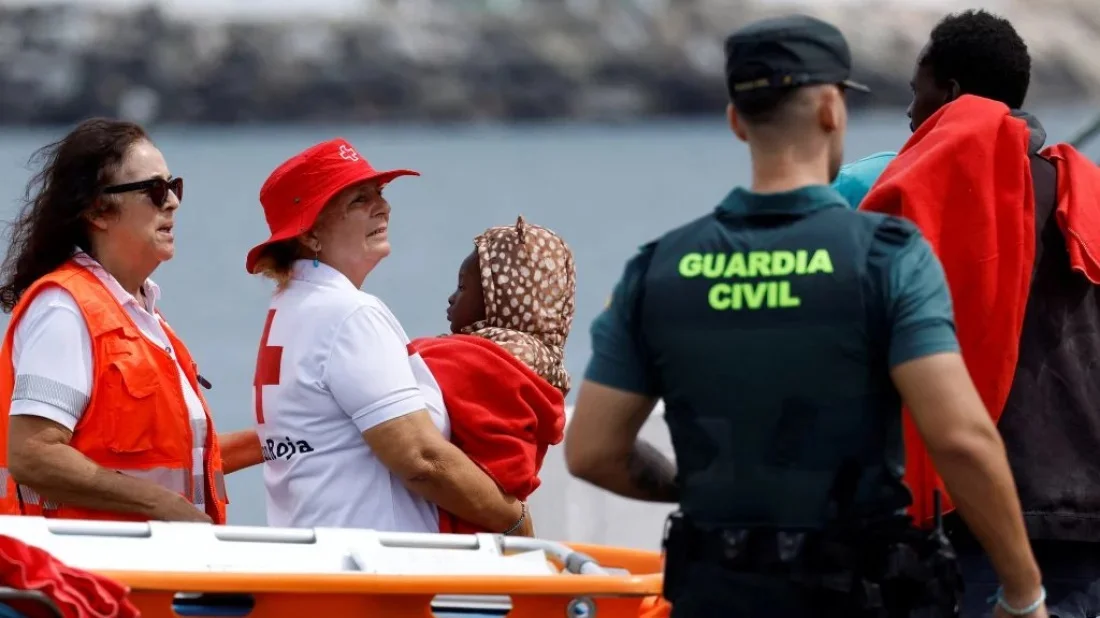NGO: Migrant toll on Spain route soars to 33 deaths per day
Share on:

The majority of deaths occurred on the Atlantic route to the Canary Islands
More than 5,000 migrants died while trying to reach Spain by sea in the first five months of this year, or the equivalent of 33 deaths per day, an NGO said Wednesday.
“It is the highest-ever daily number of deaths since records began,” said Caminando Fronteras, a Spanish charity which alerts the maritime authorities to migrant boats in distress and began collating figures in 2007.
“The figure is alarmingly high in comparison with last year,” said the NGO.
The total of 5,054 deaths in just five months, among them 154 women and 50 minors, is already approaching the overall number of victims for the whole of last year. That stood at 6,618, equating to an average 18 deaths per day of people trying to reach Spain in 2023.
This year’s figure was calculated following an “exhaustive” analysis of the migration routes taken by migrants seeking to reach Spain from as far away as Senegal in the south to Algeria on the Mediterranean coastline.
The vast majority were on the Atlantic route, where 4,800 migrants died while trying to reach Spain’s Canary Islands, it said.
“We cannot normalize these figures... it is not complicated, it is just about not letting people die at the border and using all means to save the lives of those at risk,” said Caminando Fronteras founder Helena Maleno in the statement.
The figures emerged after a year in which a record 56,852 undocumented migrants reached Spain’s shores, an 82% jump from 2022.
This year, the numbers are already trending far higher, with interior ministry figures showing that by the end of May, 20, 854 migrants had reached Spain by sea, up from 8,812 in the same period last year.
Spain is one of the main gateways for migrants seeking a better life in Europe, with the vast majority making the perilous boat journey to try and reach the Canary Islands which lie off the northwestern coast of Africa.
The Atlantic route is particularly dangerous due to the strong currents, with migrants travelling in overloaded, often unseaworthy, boats without enough drinking water.
But it has grown in popularity due to increased vigilance in the Mediterranean.
At its closest point, the Canaries lies 100 kilometres off the coast of North Africa.
But many boats -- often long wooden vessels known as pirogues -- leave from much further away, setting sail from Morocco, Western Sahara and Mauritania.
Increasingly they are coming from countries further south such as Gambia and Senegal which lie about 1,500 kilometres from the Spanish islands.
Source: AFP

